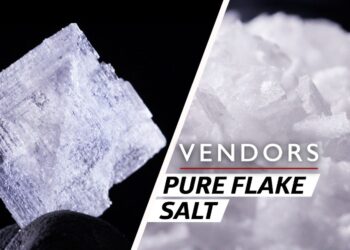Hawaiian shave ice. | Shutterstock
From Hawaiian shave ice to Mexican raspados to Filipino halo-halo, icy desserts are rightfully beloved across the globe
Shave ice, one of the world’s oldest desserts, is suddenly everywhere. It goes by many names; at Ariari in New York City, hotteok bingsoo served with cinnamon puffs and peanuts. The Lobster Club, also in New York City, serves a dolled-up “pineapple upside down” kakigori. In San Francisco, Far From Paradise Cafe serves Hawaiian shave ice with flavors like guava, mango, coconut, and root beer. And in New Orleans, where sno-balls are a longstanding tradition, Chance in Hell SnoBalls has an ever rotating list of flavors, from pistachio lemon cream to classic vanilla-almond nectar.
The frozen dessert — in which blocks of ice are shaved into snow-like mounds; thin, feather-like shards; or curly swirls — is particularly popular in Asian countries, where it can be found in different forms. It’s also popular in other parts of the globe, including but not limited to Mexico, South America, the Middle East, and of course, the United States. While the names, flavors, and forms might differ from country to country, shave ice is typically a street food, and priced accordingly. Here’s a closer look at a variety of ice-based sweets from across the world:
Shave ice styles by origin, from halo-halo to raspado
Shutterstock
Kakigori (Japan)
A traditional summer treat found all over Japan, kakigori is said to date back as far as the 10th or 11th century — though at that point it was reserved for Japanese nobility, and didn’t trickle down to the common people until the late 1800s, when industrialization made transporting ice much easier. A kakigori machine is fitted with a sharp blade that finely shaves ice off a large (sometimes square, sometimes round) block; like Hawaiian shave ice or snow cones, it is typically made with plain, unflavored ice, piled into a towering mound in a squat cup or bowl, and then topped with flavored syrups. Commonly seen syrup flavors in Japan include fresh fruits like melon or strawberry; matcha (often paired with a drizzle of condensed milk); and mizore, which is a mild but popular white sugar syrup.
Shave ice (Hawai‘i)
Hawaiian shave ice is one of the best-known forms of shaved ice desserts. Descended from Japanese kakigori, it was brought to the island by Japanese plantation laborers. The first stands opened in the early 1900s to serve plantation workers a cooling treat during the hottest summer months. Like kakigori, it resembles fine fluffy snow and is topped with flavored syrups, which are quickly absorbed into the dessert thanks to the ice’s powdery texture.
Unlike in Japan, Hawaiian stands tend to go for sweeter, brighter colored syrups like blue raspberry to bubblegum. But newer artisan-style stands are making use of locally grown ingredients, with flavors like lilikoi (passionfruit), soursop, and papaya. Hawaiian shave ice is frequently served with a scoop of ice cream at its core, and/or topped with sweet red azuki beans.
Patbingsu/bingsu or bingsoo (South Korea)
In Korea, the shave-ice dessert known as patbingsu is ubiquitous. Patbingsu relies heavily on toppings: A mound of shave ice resembling a snowball is heaped into a bowl and adorned with ingredients like sweet red beans (the most essential patbingsu topping), condensed milk, tteok (rice cakes), fruit, toasted soybean powder, and sometimes even scoops of ice cream. The concoction is typically mixed up with a spoon before consuming.
Bao bing (Taiwan and China)
Thought to have been served in China as early as the seventh century, bao bing is one of the oldest forms of shave ice, and is also found in Taiwan and Malaysia. It’s been popular in the U.S. for decades (as evidenced by a 1989 New York Times story discussing the “Americanization” of the dish). Like patbingsu, it is typically served piled high in a bowl with lots of topings, in a generous portion meant for sharing. Fruit is almost always involved, such as mango, lychee, or rambutan. Red beans are also popular, and other common garnishes include taro, peanuts, mochi, grass jelly, fruit syrups, and condensed milk.
Compared to kakigori and Hawaiian shave ice, the texture of bao bing is less powdery or snow-like and more like thinly shaved sheets or flakes of ice. And unlike other variations which use plain ice, most Taiwanese-style shops buy pre-made, pre-flavored blocks of ice, though some make their own. Much like its creamier counterpart fro-yo, bao bing shops in the U.S. offer a massive array of toppings, from fruit and beans to Oreos and gummy bears.
Shutterstock
Halo-halo (Philippines)
This Filipino favorite is typically served in a tall, clear glass to show off its many elaborate and colorful layers. Ingredients can vary wildly depending on the season or personal taste, but it almost always includes shaved ice, fresh fruit such as jackfruit, evaporated milk, a jelly-like garnish such as nata de coco (coconut gel), something crunchy (frequently toasted glutinous rice flakes, or even just Rice Krispies), and ice cream (usually ube, or purple yam). Other ingredients frequently seen in halo-halo are palm nuts, mung beans, and shredded coconut. Naturally, American chefs have put their own spin on halo-halo by topping it with breakfast cereal like Cap’n Crunch and Pocky sticks.
Nam kang sai (Thailand)
Thailand’s version of shave ice is sold by street vendors across the nation, who typically use hand-crank machines to shave their ice; patrons can choose to concoct their own combos with ingredients like jackfruit, taro, sweet corn, water chestnuts, and cubes of bread. The mixture is frequently topped with sala syrup — an artificially flavored sweet red syrup that’s also used to make a popular drink called pinky milk — and/or coconut milk.
Es campur (Indonesia)
Found all over Indonesia, from street hawkers to full-service restaurants, es campur typically looks like a bowl of larger chunks of ice rather than finely shaved snow. It is served in a shallow bowl or glass and floats in a mixture of various additions, usually including sweetened condensed milk, pandan syrup, and possibly basil seeds, grass jelly, jackfruit, fermented cassava root, coconut, or avocado.
Ais kacang (Malaysia)
Sometimes called ABC, this sweet ice is served at hawker stands across Malaysia as well as in Singapore. Ais kacang (or “ice kacang”) is made with tall mounds of fluffy machine-shaved ice topped with various flavored syrups like rose, pandan, or gula melaka (palm sugar); popular garnishes include red beans, durian, basil seeds, peanuts (“kacang” means nuts or beans), seaweed jelly, sweet corn, sprinkles, and of course, the ubiquitous condensed or evaporated milk.
Piragua (Puerto Rico)
A popular summertime treat in the U.S. island territory, piraguas can also be found in parts of the U.S. that have large boricua populations, such as New York and Florida. Typically served in a plastic cup, the ice is scraped by hand (making it coarser than the fluffy snow found in kakigori) and then mounded into a tall pyramid shape before being topped with flavored syrup; it is served with a straw to slurp up the dessert as the syrup and ice melt together. Popular flavors include tamarind, coconut, sesame seed, passionfruit, pineapple, and melon.
Shutterstock
A raspado vendor in Los Angeles.
Raspado (Mexico)
Popular all over Mexico as well as in areas of the U.S. with significant Mexican immigrant populations, such as LA, raspados are Mexico’s version of the snow cone. (Raspado comes from raspar, Spanish for “to scrape.”) Raspados are traditionally scraped by hand with a metal tool called a raspador. Usually served in a plastic cup with a straw for slurping as the ice and syrup melt together, they come topped with fruit, syrup, and/or milk; the most ubiquitous flavors include tamarind and rompope (eggnog). Similar desserts are popular in Cuba (where they’re referred to as granizado) and numerous Latin American countries, including Colombia (cholado).
Shikashika (Peru and Bolivia)
Found only in Peru and Bolivia, shikashika (also called raspadilla) has one unique characteristic that sets it apart from every other type of shaved ice dessert: It is made with glacier ice brought down from the Andes. The topic of the 2008 documentary Shikashika, the process of obtaining the ice blocks can be harrowing, but it provides significant business for local rural economies. Once the ice blocks are transported from the mountains into towns, they are shaved; topped with flavored syrups, honey, and/or milk; and served in a pint glass with a spoon.
Gola/Chuski (India and Pakistan)
A popular summertime treat at street-food vendors across India and Pakistan, gola (also called chuski or gola ganda) has a coarser texture, like a snow cone, and is frequently prepared via a hand-crank machine. The ice is compressed into a cup, soaked with syrup — popular flavors include mango, rose, and kala khatta, which is made with blackberry and cumin — and then slid onto a stick before serving, looking something like a hybrid of shaved ice and a popsicle.
Other ice desserts that aren’t quite shaved ice
Faloodeh (Iran)
It would be impossible to compile a list of ice-based sweets without including faloodeh. Considered one of the oldest known frozen desserts, Iranian faloodeh dates back to the fourth century B.C. and is flavored with rosewater. With a slushy texture similar to granita, it’s prepared by making a syrup with water, sugar, lime juice, rosewater, and then freezing it. (It’s sometimes made with saffron, which gives it a distinct golden hue.) It’s often topped with a sour cherry syrup, pistachios, or fresh lime juice. Faloodeh stands out from other icy desserts because it’s mixed with crushed-up noodles, which gives it a unique texture; thin, translucent rice vermicelli noodles are commonly used, but the noodles can also be made with other starches such as arrowroot or potato starch.
Shutterstock
Snow cones, Sno-balls, Italian ice, etc. (United States)
Across the U.S., the most popular form of shaved ice dessert is the snow cone. It is typically made from finely crushed, rather than shaved, ice and therefore has a coarser, crunchier texture than Hawaiian shave ice. The snow cone is said to have been invented in 1919; one year later, a man named Samuel Bert devised the first snow cone machine and began selling the treats at the State Fair of Texas.
Seasonal snow cone stands can now be found all over the United States, with patrons lining up during the summer months to order paper cones or styrofoam cups filled with mounds of cool, crunchy ice topped with numerous flavored syrups. The most common flavors include fruits like cherry, strawberry, grape, and lemon-lime, and concoctions like “tiger’s blood” (watermelon, strawberry, and coconut). Snow cone stands also frequently offer ice cream as an addition; a scoop of ice cream (almost always vanilla) is placed in a cup and then topped off with a layer of ice and syrup. In recent years more unusual flavors, like pickle, have also become popular, as have artisanal snow cone shops that serve all-natural syrups made with fresh fruits or ingredients like Earl Grey tea.
Snowballs, or sno-balls, as they are frequently referred to, are a snow cone variation particularly popular in Louisiana. Like snow cones, they are made with plain unflavored ice and then topped with flavored syrup. But as the names indicate, the treats are made with shaved ice versus crushed ice, giving them a fluffy, snow-like texture. One of the most iconic sno-ball shops is arguably Hansen’s Sno-Bliz in New Orleans, which has won a James Beard Award and serves unique flavors like bananas Foster.
Baltimore also has its own version of the snowball, which was created during the Industrial Revolution. Ice trucks passing through the city would stop and give ice shavings to kids, and adults would add flavorings; later, they were served in movie theaters as a way to keep patrons cool during the summer.
Italian ice, another regional American ice-based dessert, is often flavored with lemon. Sometimes smooth enough to sip out of a straw like frozen lemonade, it’s more often creamy enough to spoon out of a cup, and is a relative of granita, a treat from southern Italy. In Philadelphia, the variation is named water ice, made from water, sugar, and fruit juice. It’s texture is creamer than the granular or powdery feel of shave ice or a snow cone.
Granita (Italy)
The frozen dessert most often associated with Italy is gelato, but granita is another popular warm-weather treat, particularly in its birthplace: Sicily. In the summer, Sicilians frequently forego their morning cornetto pastries in favor of a cooling granita to pair with their espresso. Served in a glass, sundae dish, or a small paper cup, it has an icy, crystalline texture; unlike other shave ice desserts that are made with flavored syrups poured over plain ice, granita is made by flavoring the liquid before it’s frozen with fruit juice or other ingredients.
Rather than being shaved to order like Hawaiian shave ice or bao bing, granita syrup is agitated as it’s frozen to create a slightly gritty texture. It’s then scooped out of metal troughs, like gelato. Fruit flavors such as lemon and strawberry are particularly popular, but granita also comes in non-fruit varieties like pistachio and chocolate. It is sometimes topped with a dollop of whipped cream.
Fact-checked by Dawn Mobley
Special thanks to Sam Kim














